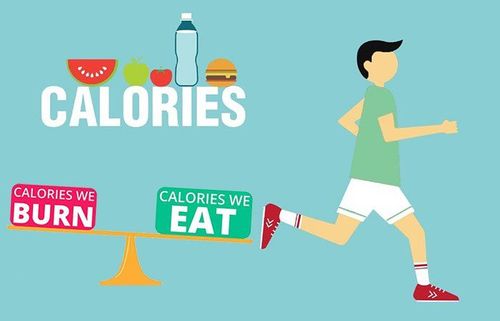This is an automatically translated article.
High-intensity interval training (HIIT) isn't just for the young and healthy. Researchers have found that interval training can improve health and fitness for most ages, and has even greater benefits for older adults. So why is interval training possibly the best exercise at any age? Read the article below to know more about this issue.1. Everything you need to know about interval training
Modern life makes us always feel pressured and lack of time in finding the most effective way to use precious moments to exercise. High-intensity interval training, or HIIT, can be of great help to busy people.Interval training promises to bring the best training effect in the shortest time. Runners have been using interval training for over 100 years, alternating between sprinting and jogging to improve their endurance. But interval training didn't really hit the mainstream until about a decade ago, when exercise physiologists started doing research demonstrating that rest periods between intense exercise Altitude can provide the greatest health improvements to athletes' exercise time. In 2013, the seven-minute exercise, popularized by the New York Times, was first published, and in 2016 the one-minute exercise.
Recently, fitness experts voted interval training as one of the top fitness trends for 2020 in a survey by the American College of Sports Medicine. And interval workouts are popping up everywhere now: at chains like Shred415 and Orangetheory, in group classes at the YMCA, on apps and YouTube, even in routines featured in magazines Oprah's O. Often they promise to burn fat and "metabolize the body for energy," as Orangetheory puts it, in a short period of time.
But there are some important nuances that scientists have learned about interval training that have hidden in the hype. The proven benefits of these exercises involve a very specific type of interval training and they have nothing to do with weight loss.
1.1. What is interval training? Interval exercises often combine short bursts of high-intensity exercise with periods of rest or lower-intensity exercise. At gyms and online, these workouts often combine aerobic and resistance training.

Các bài tập này thường kết hợp giữa tập aerobic và tập sức bền
When researchers talk about interval training, they are referring to aerobic exercises that alternate periods of rest, in which a person's heart rate reaches at least 80% of its work. maximum capacity (based on heart rate monitor), usually for one to five minutes, with periods of rest or exercise at a lower intensity..)
“There is a strict definition of interval training. and heart rate,” explains Todd Astorino, professor in the department of dynamics at California State University San Marcos. There are also SIT studies, which include high-intensity episodes (working at 100% heart capacity). The SIT study, which also focused on intervals, showed the same benefits as high-intensity interval training exercises.
1.2. How to do interval training What distinguishes high-intensity interval training (or SIT) from continuous, steady-state types of exercise - like jogging or walking - for example - are the time periods, the times when the intensity of the practitioner's heart beats strongly. If you want to give it a try, you can simply take an interval training class, jog or even walk at a brisk pace on a steeper surface.
If you want a proven and tested workout routine, apply a concept called 4 times 4. It includes a warm-up followed by four four-minute intervals (again). , when the exerciser's heart rate exceeds 80 percent of maximum capacity), each alternates with a three-minute recovery period and ends with a cool-down. Example: You jog for 10 minutes to warm up, then run faster for about 4 minutes, with about 3 minutes of moderate jogging or brisk walking in between and 5 minutes of cooling down at the end of the workout. In addition, exercisers can also replace running with other aerobic exercises, such as cycling or swimming. The whole process will take 40 minutes.

Điều khác biệt giữa tập luyện thể dục cường độ cao ngắt quãng (hoặc SIT) với các loại bài tập liên tục, trạng thái ổn định là các khoảng thời gian
Again, these routines look quite different from what's offered at chains like Orangetheory, CrossFit, or even the seven-minute workout. Although they are often referred to as interval training, they are actually a combination of cardiovascular exercise with strength training.
1.3. What are the benefits of interval training? The only best-established benefit of interval training has to do with cardiovascular health. Interval training can provide health benefits, especially for the cardiovascular system, comparable to forms of continuous exercise but for a shorter period of time. This could be explained by improved maximal oxygenation, a measure of endurance that calculates the maximum volume of oxygen the body can use. “Scientists have shown that maximal oxygen volume is one of the best predictors of your overall health,” according to the recent book The One Minute Workout by the author of The One Minute Workout. Martin Gibala is one of the world's leading interval training experts, based at McMaster University in Canada. “The more aerobic exercise you do, the better your heart will pump, the longer it will take for you to exhale and the farther and faster you can bike, run or swim.” And that can help prevent heart disease.
Consider this 2016 SIT study, in which Gibala and its authors followed two groups of participants for 12 weeks: One group exercised for 10 minutes (including a number of intervals that add up) up to one minute) and the other for 50 minutes (at a steady intensity). The most striking finding in the study was that the two groups of people who exercised had the same improvement in their oxygen uptake, despite the different timing of their workouts. In a 2014 study, Gibala and colleagues asked a group of overweight, obese and sedentary adults to do three exercises per week, totaling 30 minutes of exercise. Each exercise consists of three brisk bike rides for about 20 seconds. Even within that short period of time, study participants saw an improvement in their maximal oxygen volume. Reviews of the study reached the same conclusion: Interval routines resulted in greater maximal oxygen volume increases than other forms of training over a shorter period of time. “Interval training is a time-efficient strategy to get the same benefits as traditional cardio over a longer period of time,” Gibala tells Vox.
Of course, the more high-intensity interval training you do, the more cardiovascular health benefits you'll get. In a 2013 meta-analysis, researchers evaluated the effects of high-intensity interval training studies, separating nine studies that showed the greatest improvements in maximal oxygen volume and nine studies that showed the greatest improvements in maximal oxygen volume. Research reports the lowest level of improvement. Findings show that: Lower-intensity training programs with shorter durations provide the fewest health benefits, while interval training studies that report the greatest gains are often found use for a longer period of time (3-5 minutes). For this reason, athletes have long used interval training to improve their performance, Mayo Clinic fitness researcher Michelle Joyner told Vox in 2016. “It's well documented. Observation of athletes for nearly 100 years shows the benefits of high-intensity interval training.” “When you want to bring your body to its biologically high limits, you need to do four to five high-intensity workouts over three to five minute intervals,” he adds. .

Lợi ích duy nhất được thiết lập tốt nhất của việc luyện tập cách quãng liên quan đến sức khỏe tim mạch
Gibala says: “Maximum blood output from the heart is improved with exercise, and there is evidence that with interval exercise, stroke volume increases even more.”
1.5. Is interval training the best exercise regimen for weight loss? There's no doubt that interval training can be a time-efficient way to burn calories. Researchers have repeatedly shown that people can burn about the same number of calories in an extended interval training routine, as in an extended continuous exercise routine. The reason for that, says Gibala, is that more intense exercise leads to more disturbance of the body's homeostasis, "And it literally takes more energy and oxygen to get it going." back to baseline normal."
The question is whether that calorie burn translates to weight loss and that's why interval training is gone. A 2019 systematic review of trials comparing high-intensity interval training and SIT with moderate-intensity interval training found that all exercises performed the same in terms of fat loss.
Gibala says: “Many people overstate the possibility that interval training can cause you to lose weight. But that's the problem with exercise in general, not high-intensity interval training specifically. As we've explained, it's much easier to lose weight by cutting calories in your diet than trying to burn off excess calories.

Nhiều người phóng đại quá mức khả năng của việc tập luyện ngắt quãng có thể khiến bạn giảm cân
2. Why is interval training possibly the best exercise at any age?
2.1. Interval training may protect cells from aging Mayo Clinic researchers studied the effects of interval training on people over 65. What they discovered may surprise many: Some muscle cells that decline with age have actually been restored. Interval training seems to be able to change cellular DNA in a way that enhances the muscle's ability to produce energy. It also triggers the growth of new muscle, helping to combat the inevitable muscle loss caused by aging.These changes were more dramatic in people over 65 who exercised than in a group of people under 30 who did the same exercise. One lesson that can be learned: It's never too late to start and reap great benefits from exercise.
2.2. Interval Training Is Easier Than You Think Interval training doesn't require specific training or special equipment. In one study, walkers who added intervals of increased speed improved aerobic fitness, leg strength, and blood pressure. They did it by simply alternating between three minutes of brisk walking and three minutes of slow walking for 30 minutes or more four times a week.
2.3. Interval training is compatible with many health conditions You should talk to your doctor before starting a new exercise routine, especially if you have a chronic health condition. But many studies have concluded that interval training can be safe and beneficial for people with diabetes, metabolic cardiovascular disease, and more.
In a recent study, people with intermittent heart disease who performed interval training exercises improved how much their heart rate slowed down to normal after exercise. This is considered an important marker for longevity.

Tập luyện ngắt quãng có thể an toàn và có lợi cho những người mắc bệnh tiểu đường, bệnh tim mạch chuyển hóa
High-intensity interval training isn't just for the young and healthy. Researchers have found that interval training can improve health and fitness for most people, and there are even greater benefits for older adults. The concept of "High Intensity Interval Training" is quite simple. Practitioners can do anything in 30 seconds or even minutes. And then, rest or do gentle exercise for a beat and repeat this process continuously. During a high-intensity interval training workout, the practitioner alternates between high-intensity and low-intensity training efforts.
Please dial HOTLINE for more information or register for an appointment HERE. Download MyVinmec app to make appointments faster and to manage your bookings easily.
Articles refer to sources: mayoclinic.org, vox.com












